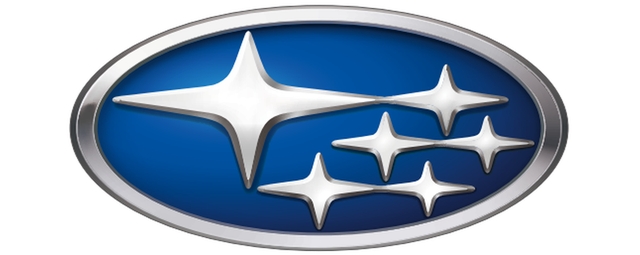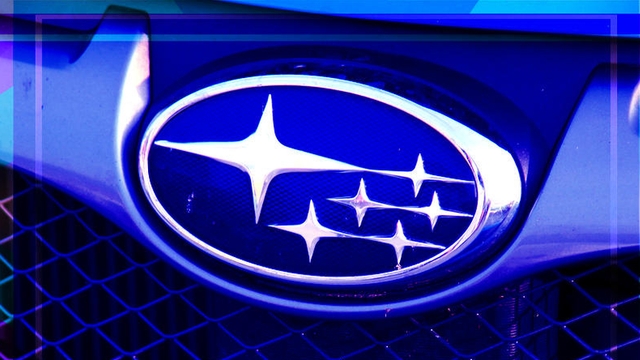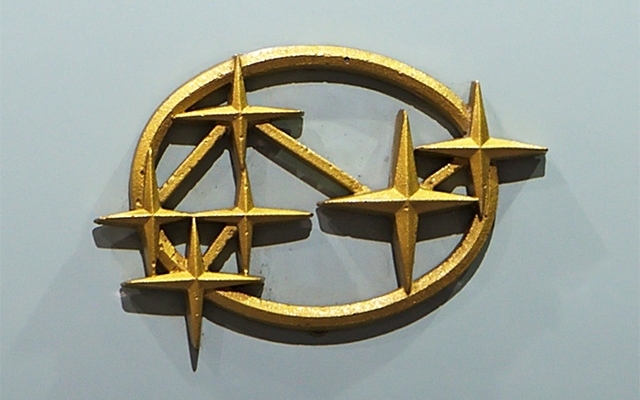Subaru is a widely recognized manufacturer of mass-market, cost-effective, and dependable automobiles. This Japanese car brand is a division of Subaru Corporation, formerly known as Fuji Heavy Industries. Subaru is renowned for its boxer engine and all-wheel-drive configurations, which have essentially become standard features in its vehicles. The brand has an interesting origin and the current Subaru logo meaning has a deep meaning and reference to its history.
Table of Contents
Subaru Logo PNG

1920*1080
Subaru Information
| Founded | 15 July 1953 |
| Founder | Kenji Kita Chikuhei Nakajima |
| Headquarters | Ebisu, Shibuya, Japan |
| Official website | www.subaru-global.com |
| Owner | Subaru Corporation |
| Subaru Logo Creator | Tatsuzo Sasaki |
The earliest precursor to Subaru began its operations in 1915 under the name Aircraft Research Laboratory and became well-known as an aircraft manufacturer during World War II. After the war, the company, now called Fuji Sangyo, underwent a significant transformation due to Japan’s anti-zaibatsu laws. It was divided into 12 smaller entities in the post-war years.
Nonetheless, five of these companies, specifically Fuji Kogyo, Fuji Jidosha, Omiya Fuji Kogyo, Utsunomiya Sharyo, and Tokyo Fuji Sangyo joined forces to establish a new company named Fuji Heavy Industries. These companies were experts in engine, coach, and chassis production, and in 1953, they merged to create a comprehensive vehicle manufacturing company. In April 2017, Fuji Heavy Industries underwent a significant transformation by changing its name to Subaru Corporation.

Subaru Logo Meaning
In choosing a brand name, the former CEO of Fuji Heavy Industries, Kenji Kita, opted for “Subaru,” which is the Japanese name for the Pleiades star cluster, M45, in the Taurus constellation. This cluster is often referred to as the “seven sisters,” with one of them being invisible. Consequently, the Subaru logo features six stars, with the largest star symbolizing Fuji Heavy Industries and the smaller stars representing the companies that merged with it. Notably, it’s not just the imagery that aligns with the Subaru logo, but also the text, which translates to “United” in Japanese. In this way, the Subaru logo meaning serves as a reminder of the union of its predecessor companies.
It’s worth mentioning that the Pleiades star cluster consists of hot, blue stars, which harmonize with the blue background of the Subaru logo. However, it’s interesting to note that the blue background is a relatively recent addition to the logo, as the company had previously experimented with both transparent and solid color backgrounds.
In the Subaru logo, the silver-colored stars are enclosed within a blue oval, which is outlined in silver. The blue hue in the Subaru logo symbolizes the reliability and excellence of the company’s vehicles.

Subaru Logo Evolution
The automaker’s original logo featured an accurate representation of the stars but had a somewhat cluttered appearance. Over the years, the logo underwent various changes, including alterations to the colors of the stars and the background. These changes even included variations like golden-colored stars and a red background.

Throughout its history, Subaru has maintained the core concept of featuring six stars in its logo. However, the company has made adjustments to the design elements of the stars, including their size and placement. As a result, the largest star has shifted to the upper left side of the oval, while the remaining stars are neatly arranged in the bottom right corner. Over the years, the oval shape of the logo has also become more flattened, much like the evolution of the Ford emblem.

Subaru’s Connection with Aerospace
The company originally began as an aircraft manufacturer and has upheld its heritage. To this day, it maintains an aerospace division that produces helicopters and airplanes for Boeing and Lockheed Martin under license.
Partnerships with Nissan, GM, and Toyota
Subaru has had various prominent automakers as shareholders at different points in its history. In 1968, Nissan acquired a 20.4% equity stake in Fuji Heavy Industries, as part of a government-mandated restructuring aimed at improving competitiveness.
Subsequently, with the merger between Nissan and Renault, Nissan’s stake in Fuji Heavy Industries was transferred to General Motors (GM) in 1999. This transition also led to the development of some badge-engineered models.
Following GM’s departure in 2005, Toyota stepped in as a capital partner for Fuji Heavy Industries. Since then, both companies have collaborated on a wide range of automotive projects.

